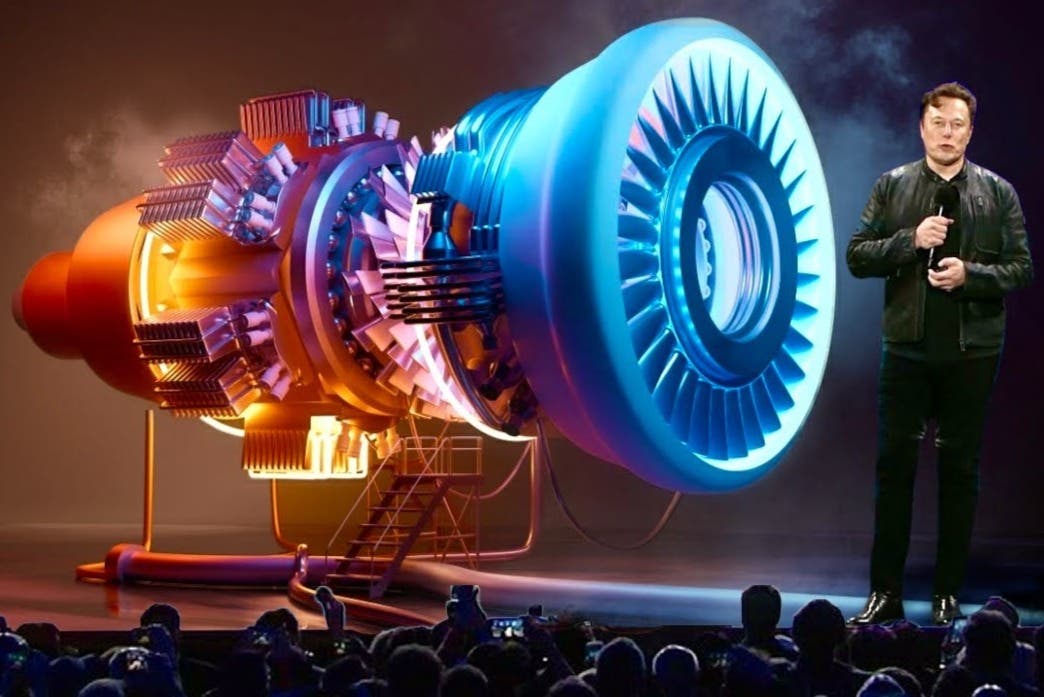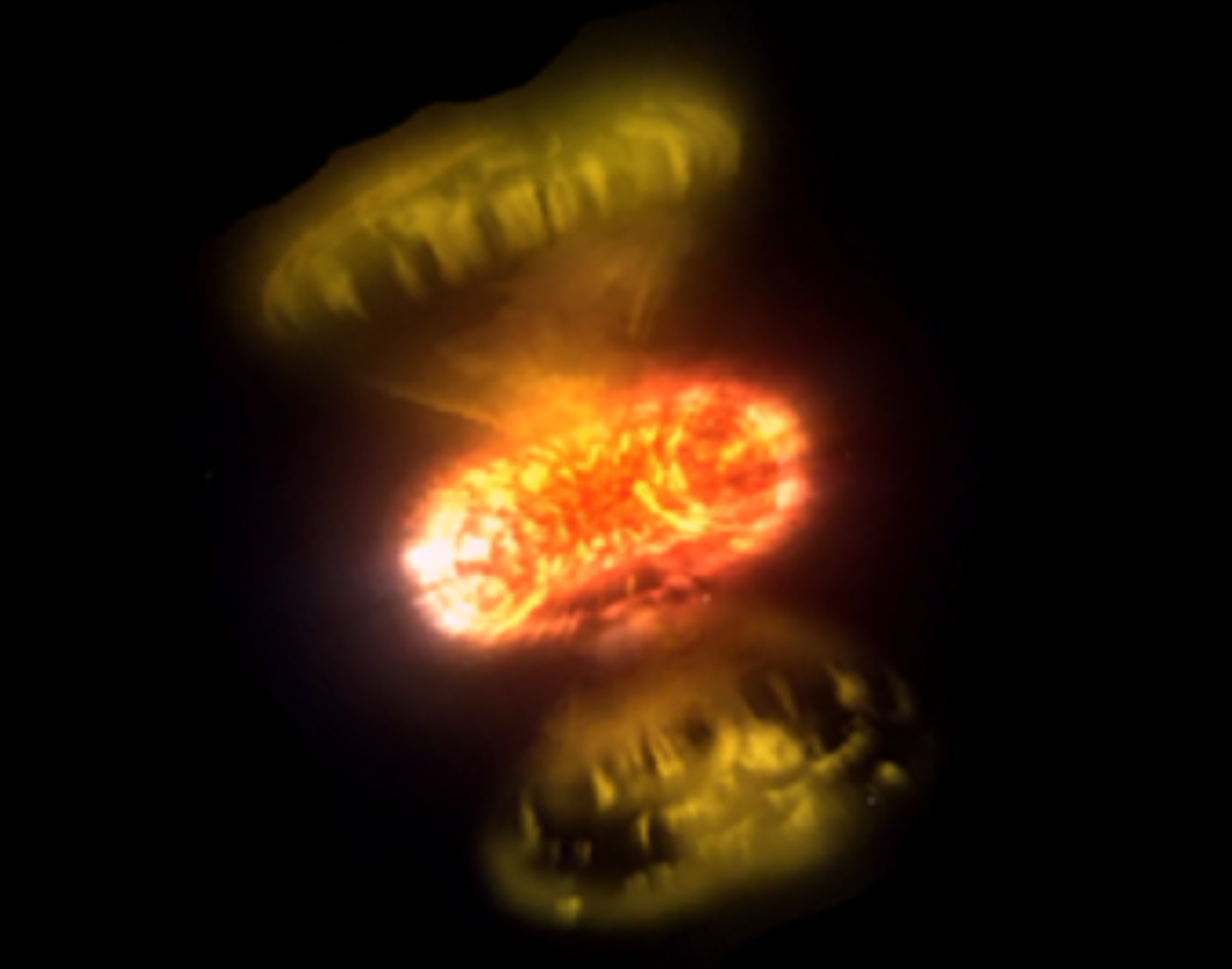Cutting-edge rocket engine could accelerate to 99% the speed of light
David Burns produced an engine concept that, he says, could theoretically accelerate to 99 percent of the speed of light

[Dec. 9, 2023: JJ Shavit, The Brighter Side of News]
David Burns produced an engine concept that, he says, could theoretically accelerate to 99 percent of the speed of light - all without using propellant. (CREDIT: Creative Commons)
The vastness of space poses a significant challenge to humanity's urge to explore and discover all the wonders it holds. Despite our best efforts, the scale of space is simply too immense to traverse quickly. Even at the maximum possible speed permitted by the laws of the Universe, it would still take years to reach the closest neighboring star.
However, human ingenuity has always found ways to tackle seemingly insurmountable challenges. David Burns, a NASA engineer, has been working on a solution to this problem in his free time. He has developed a concept for an engine that he claims could reach up to 99 percent of the speed of light without requiring any propellant.
The "Helical Engine" paper has been submitted to the NASA Technical Reports Server, utilizing the change in mass at relativistic speeds as its basis for operation. However, it has yet to be reviewed by an expert.
This paper has generated significant interest, similar to the initial hype surrounding the EM Drive. Despite some headlines claiming that the engine could "violate the laws of physics," it remains unlikely that the concept will challenge fundamental physics principles in the near future. While intriguing, the Helical Engine is unlikely to revolutionize physics as we know it.
Related Stories
The 'Helical Engine' model. (Credit: luismmolina/iStock)
To explain his concept, Burns employs a thought experiment featuring a box that holds a weight suspended by a thread and two springs at each end, causing the weight to move back and forth. If this box were placed in a vacuum, such as space, the entire box would vibrate, while the weight would appear stationary, similar to a stabilized gif focused on the weight.
In general, the box would remain stationary while wiggling. However, if the weight's mass were to increase in a particular direction, it would create a stronger force in that direction, resulting in more thrust.
The conservation of momentum principle asserts that the momentum of a system remains constant without any external forces acting on it. Therefore, achieving complete thrust under these circumstances may not be possible.
However, there is a loophole in special relativity that offers a glimmer of hope. As per special relativity, objects gain mass as they approach the speed of light. Thus, replacing the weight with ions and the box with a loop could enable ions to move faster at one end of the loop and slower at the other end, theoretically.
Burns' concept, called the "helical engine," is not a single closed loop. Instead, it's a helical structure that resembles a stretched-out spring. Burns described the engine as accelerating ions confined in a loop to moderate relativistic speeds, and then varying their velocity to make slight changes to their mass.
The engine moves ions back and forth along the direction of travel to generate thrust. Notably, the engine has no moving parts, except for ions that travel in a vacuum line and are trapped inside electric and magnetic fields.
This concept sounds impressive in theory, but it has some significant practical challenges to overcome. According to New Scientist, the helical chamber would have to be quite large, precisely around 200 meters (656 feet) long and 12 meters (40 feet) in diameter.
Generating 1 newton of thrust would require producing 165 megawatts of energy, which is equivalent to the power output of a power station required to accelerate a mass of 1 kilogram per second squared. Therefore, despite the enormous input, the output is incredibly small, making it a terribly inefficient process.
But in the vacuum of space? It just might work. "The engine itself would be able to get to 99 per cent the speed of light if you had enough time and power," Burns told New Scientist.
The fact is, a significant portion of humans desire to venture into interstellar space, even though not everyone shares this sentiment. While reaching this destination may remain elusive, failing to contemplate the possibilities guarantees its impossibility. After all, the saying goes, "you miss 100 percent of the shots you don't take."
The 'Helical Engine' works by exploiting the way mass can change at relativistic speeds. (CREDIT: NASA)
During his presentation, Burns acknowledges the issue of efficiency and admits that his calculations have not undergone expert review, which means there could be inaccuracies. Unfortunately, we lack the comprehensive plans required for a functional space travel engine.
We possess a foundation that has the potential to serve as a basis for constructing such an engine. Our possession is a vision of the celestial bodies above.
Note: Materials provided above by The Brighter Side of News. Content may be edited for style and length.
Like these kind of feel good stories? Get the Brighter Side of News' newsletter.



